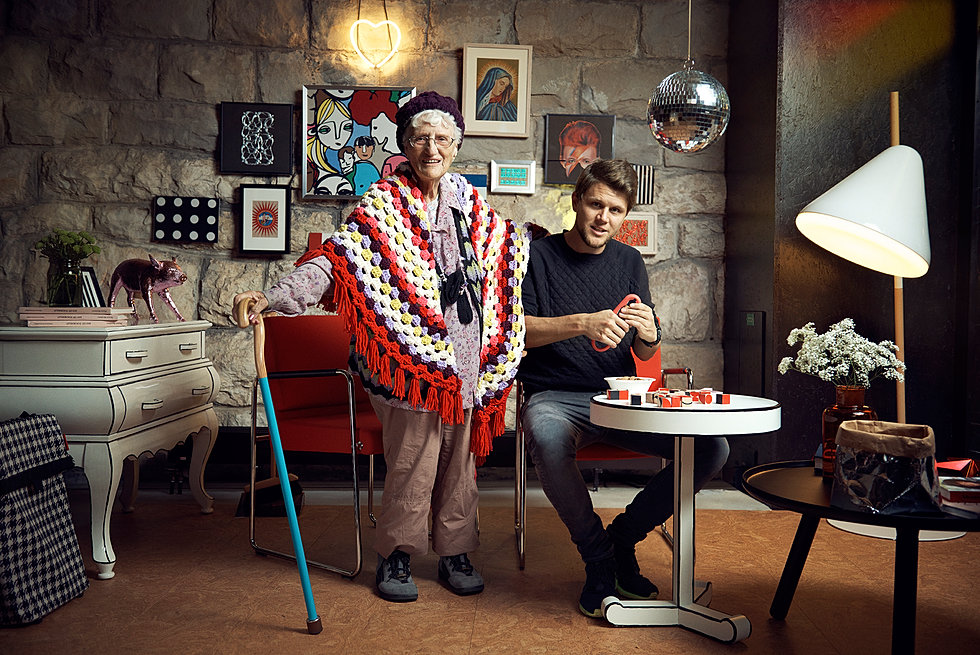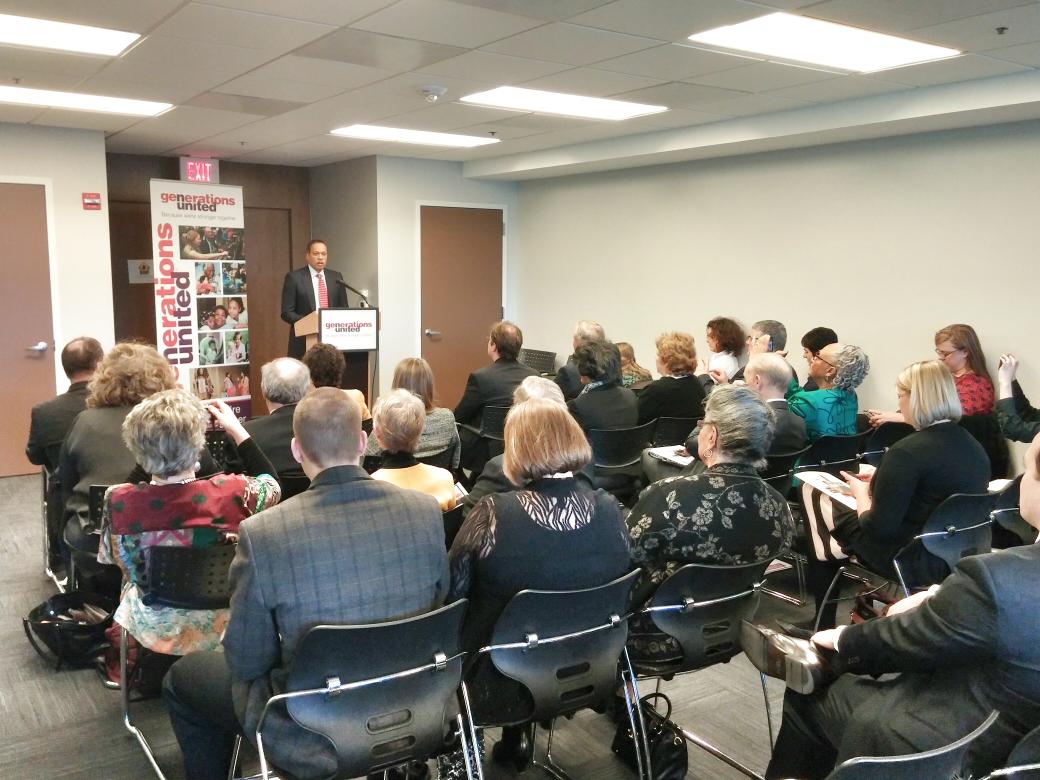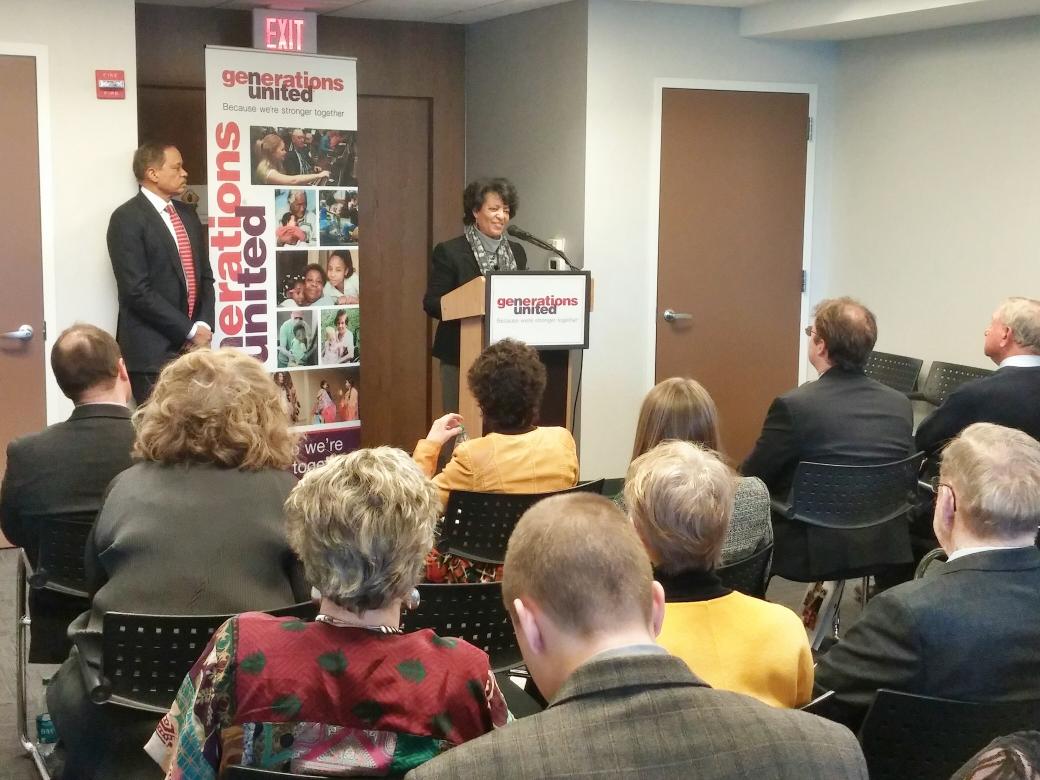 |
Mayor Sharon Walcott (center) joins council members and
the community for the Arts HQ ribbon cutting ceremony
in the Surprise Civic Center
|
Being an age-friendly community is a way of life in Surprise, Arizona. It’s nearly 124,000 residents have embraced a life-style in which all ages work together to grow a community for all ages.
A milestone was reached in 2008, when the City of Surprise and Benevilla, a human service non-profit organization, established the Community for All Ages (CFAA) partnership –which connected nonprofits, private businesses, academic institutions and city officials in a program to embrace the connections of the young and young-at-heart populations.
The CFAA provides intergenerational social interactions across all ages, ethnicities, economic status and/or disabilities by improving communication and community awareness.
“This partnership has connected toddlers with grandparents in healthy eating community gardening efforts and mind-stimulating games designed to support our elders with dementia, says Mayor Sharon Wolcott.
While the CFAA was solidified at the start of the recession, the City of Surprise and its partnering agencies were determined to implement programs and projects to support growing a connection between generations.
 |
| Surprise's Fiesta Grande event |
The City worked with its partners to coordinate events and vendors to complement one another and maximize resources.
The city’s General Plan includes goals that support the continuation of its annual Senior Safety Day, where young volunteers install smoke detectors, fire extinguishers and conduct safety audits in the homes of older adults.
Through a partnership with Benevilla and Rio Salado College’s Lifelong Learning program, the Community for All Ages partnership created an intergenerational campus in the city’s Historic Original Town Site in April 2009.
The Original Town Site also hosted the 1st Annual Surprise Fiesta Grande event that attracted more than 20 vendors and 15,000-plus resident in celebration of the city’s Mexican heritage.
"Our 75 guests from Nogales, Sonora, provided traditional folkloric and mariachi entertainment that got all residents dancing, no matter the age," Mayor Wolcott recalls.
 |
| 2012 Surprise Neighborhood Award Program |
In Surprise, they measure success in more ways than dollars and cents. For Surprise Grants Administrator Janeen Gaskin, the community’s sweat equity and volunteer spirit is what sets them apart from other communities.
Their sweat equity and volunteer spirit shines through their anti-graffiti project, which brought together volunteers from elementary schools and older adults to complete a 30-foot-wide mosaic tile mural in the community park.
Over the last three years, Vice Mayor John Williams added three new youth leadership opportunities that include the Youth Civic Leader Program, which gives high school students a chance to sit on the dais as a youth representative during City Council work sessions and meetings.
Since then, the city has launched a 26-member Surprise Youth Council that will work hand-in-hand with the City Council to recommend youth programs that will support the Council’s vision to create a community where young people grow up, work and raise their own families in Surprise.
"When I first moved to Surprise, I was concerned that my opportunities as a young person in this community would be limited because Surprise has a large retirement population," recalls Yazmin Padilla, Surprise Youth Civic Leader and Youth Advisory Commission Chair.
 |
| Surprise Youth Council Induction Ceremony |
Through the Youth Civic Leader Program, Padilla traveled to Washington, D.C., where she met with her elected state officials and advocated for young people in legislative initiatives.
The experience opened her eyes to how future leaders, such as herself, could make an impact.
"Not only have I been given the opportunity to perform volunteer activities," says Padilla. "But, myself and fellow youth have found Surprise to be a place where we can truly make
an impact in our community."
Padilla was also part of a team that won an entrepreneurial scholarship from the city’s business incubator,
the AZ TechCelerator, to create a locker rental business in a local charter school.
While the City of Surprise is honored to be recognized as the 2015 National Finalist for the
Best Intergenerational Communities Award, they’re proud of the fact that the Maricopa Association of Governments and Benevilla were the 2014 winners for their intergenerational efforts in Surprise.
The City of Surprise, the Maricopa Association of Governments and Benevilla look forward to continuing to grow opportunities that bridge the age gap.

"We are honored with the finalist selection this year,” Gaskins says, “and will continue to find new ways to connect our residents of all age to grow a stimulating community, that supports the needs of all residents, no matter their age.”
“This national recognition reflects that our city is truly a community of all ages,” said Mayor Sharon Wolcott. “In growing One Surprise, we champion our residents coming together in support of civic engagement, education, volunteerism and community pride.”





















.JPG)


















.JPG)


.JPG)